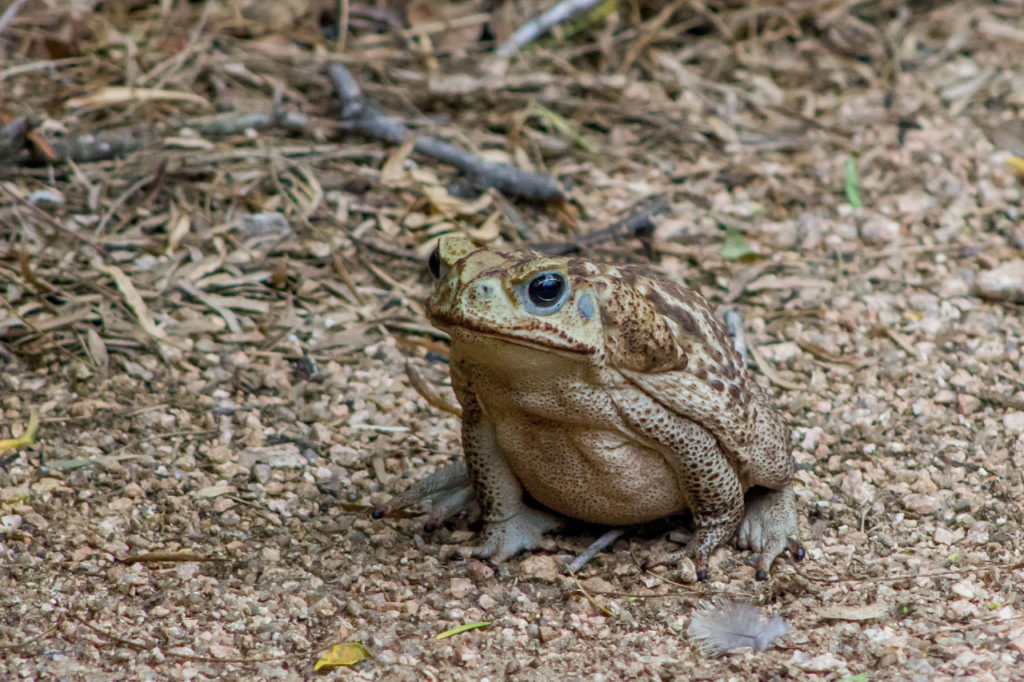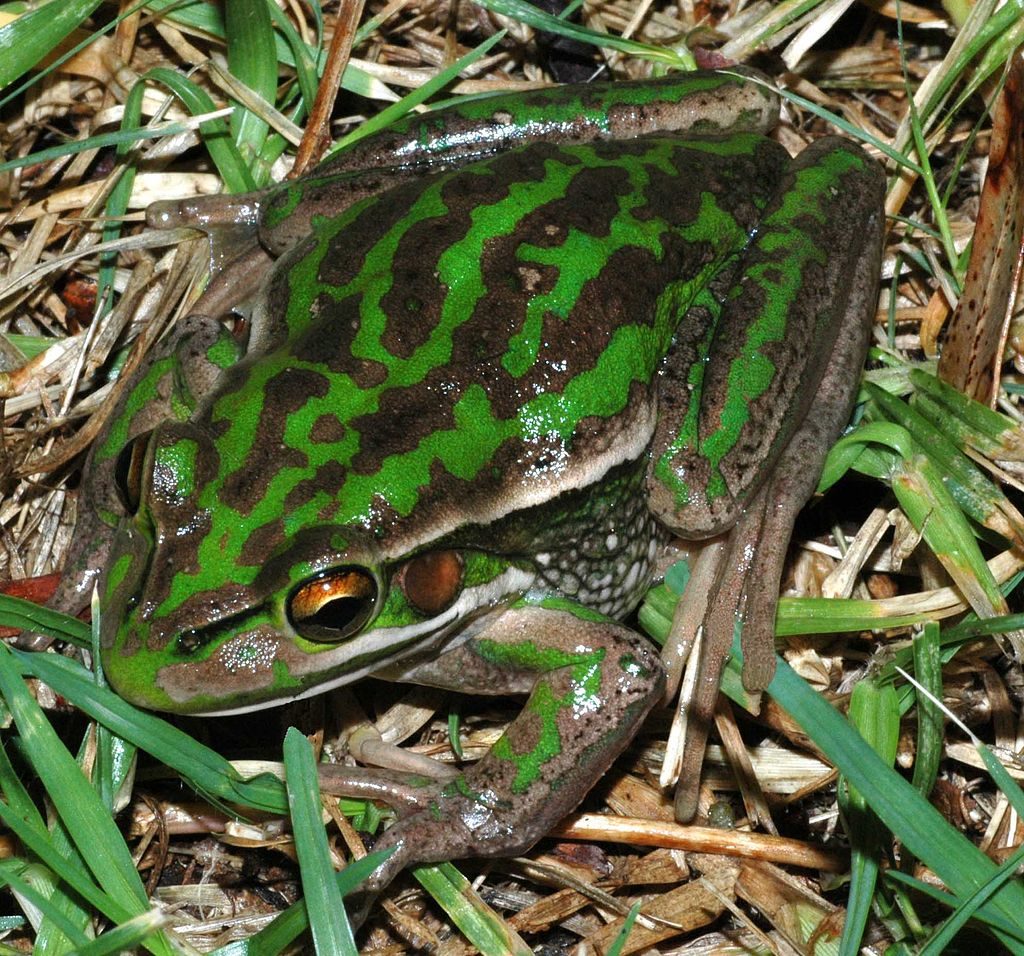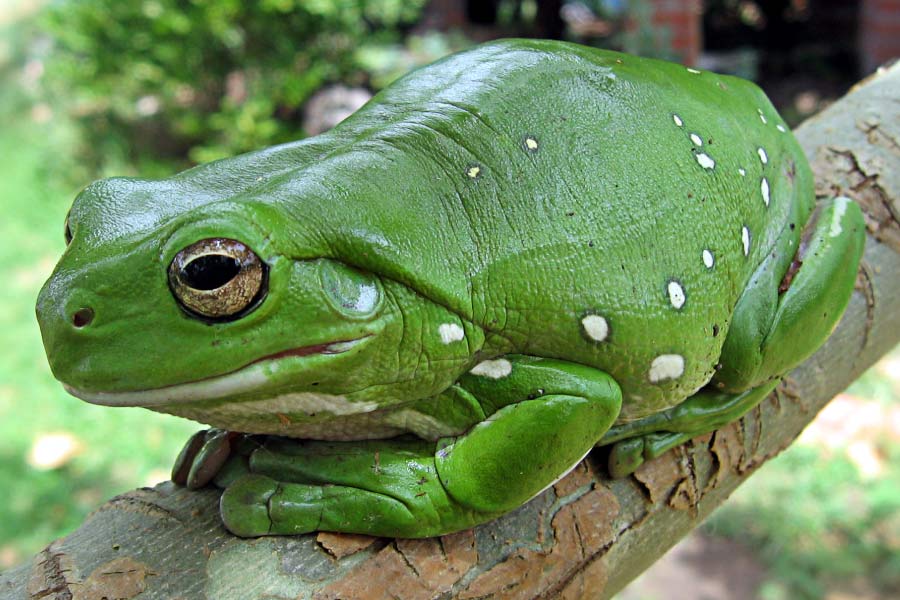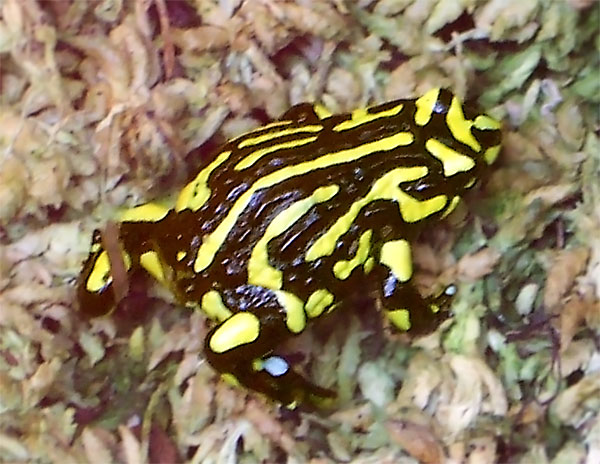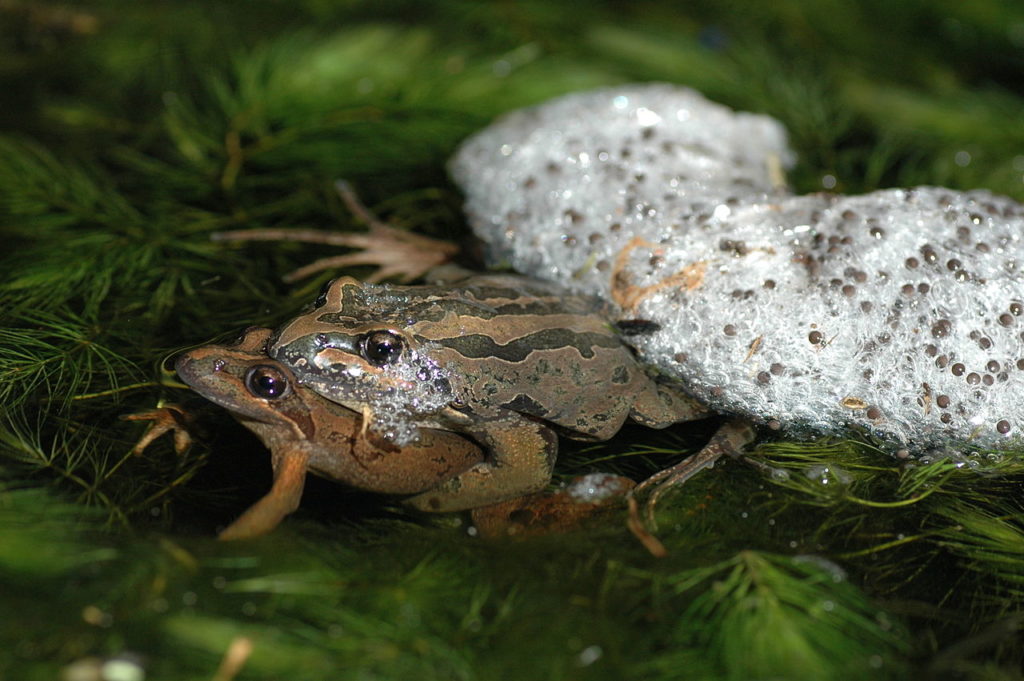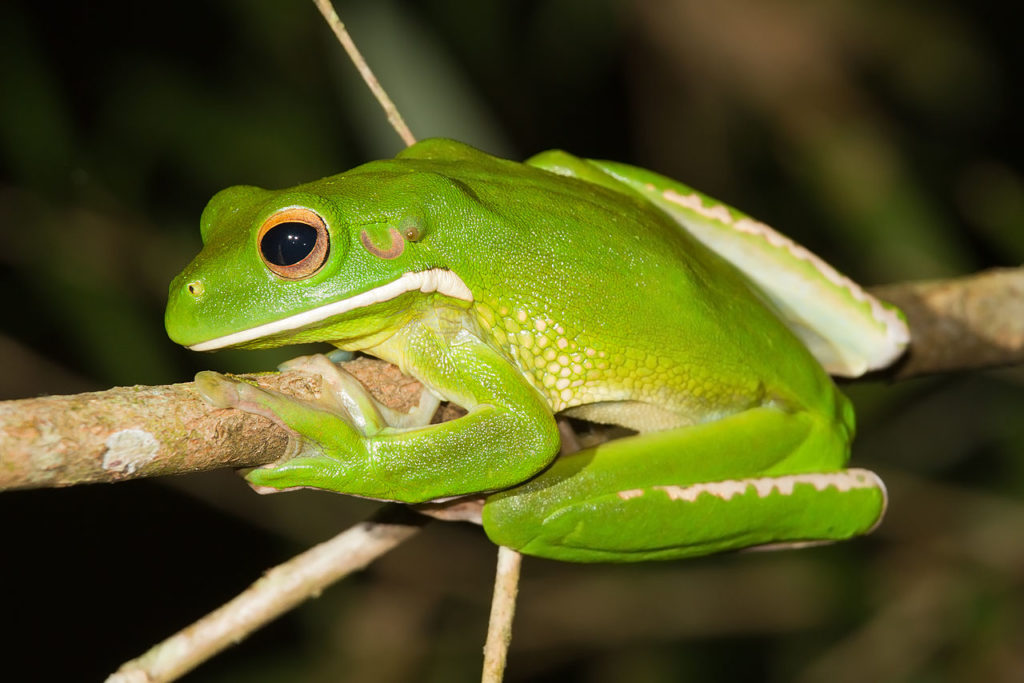Amphibians of Australia: A List of Australian frogs, with pictures and facts.
Amphibians of Australia
Of the three main groups of amphibians (frogs, salamanders and caecilians), only frogs are present in Australia.
In the list below, we've included some of the country's most amazing frogs, including: frogs with huge poison glands on their heads; frogs that spend most of their lives underground; and frogs that look like turtles!
Other Amphibian Articles On Active Wild
- Amphibians: The Ultimate Guide
- African Amphibians
- Asian Amphibians
- British Amphibians
- European Amphibians
- North American Amphibians
- South American Amphibians
- You'll find awesome amphibian books in our Natural History Bookstore
Although some Australian frogs have ‘toad’ in their names, there are no ‘true’ toads (i.e. members of the family Bufonidae), native to Australia. However, one species of true toad – the cane toad – has been introduced to the country. It is now considered to be an invasive species.
The cane toad’s introduction has had a devastating effect on many Australian species. Poison secreted by glands in the toad’s skin causes native predators to fall ill after eating the amphibian. The poison is often fatal.
You can find out more about the cane toad by reading its entry in the list below, or by visiting this page: Cane Toad Facts.
In the Australian amphibians list below you’ll meet a selection of the amazing frogs found in Australia.
How Many Frog Species Are Found In Australia?
There are around 221 species of frog found in Australia. They are divided between four families:
- Hylidae (the tree frogs): 78 species
- Microhylidae (the narrow-mouthed frogs): 19 species
- Myobatrachidae (the southern frogs, or Australian ground frogs): 123 species
- Ranidae (the true frogs): the wood frog (also known as the Australian bullfrog) is the only member of the ‘true frog’ family Ranidae native to Australia.
As we’ve already found, the non-native cane toad is a member of the family Bufonidae. This brings the total number of frog families in Australia to 5.
The number of species shown above is liable to change. This is because the way in which species are classified frequently changes. Also, new species are occasionally discovered and sadly, some species go extinct.
Australian Frogs List: Amazing Frogs from Australia
Enough talk: let’s meet some of the amazing amphibians of Australia!
Blue Mountains Tree Frog
- Scientific name: Litoria citropa
- Conservation status: Least Concern
The Blue Mountains tree frog is a member of Hylidae, the ‘true’ tree frog family. Its colour ranges from olive-brown to lime-green. A brown-black stripe runs from its nose to its tail along either side of its body. The frog has red thighs and sides.
The Blue Mountains tree frog is found between the Great Dividing Range and the coast in southeast Australia. Its call is said to sound like a ‘croaky scream’, followed by ‘a golf ball going into a hole’.
You can hear a recording of the frog's distinctive call below:
Cane Toad
- Scientific name: Rhinella marina
- Conservation status: Least Concern
The cane toad is native to Central and South America, and is an invasive species in Australia.
This large amphibian was originally introduced as a means of controlling crop-damaging insects. The species is now seen as a pest whose arrival has been detrimental to many of Australia’s native species.
Large glands behind the cane toad’s eyes produce powerful toxins. Eating a cane toad can prove fatal for a native animal. Many Australian species have been badly affected by the arrival of the cane toad; some (such as the northern quoll) have become endangered due largely to the amphibian’s introduction.
- You can find out more about this species here: Cane Toad Facts
Crucifix Toad / Holy Cross Frog
- Scientific name: Notaden bennettii
- Conservation status: Least Concern
The crucifix toad – also known as the holy cross frog – is one of Australia’s most striking amphibians. The frog's yellow / lime green coloration & bright markings warn potential predators that it won’t make an enjoyable meal – the frog’s skin secretes a thick, sticky ‘glue’ when the animal is threatened. A cross marking on the frog’s back gives the species its name.
The crucifix toad spends much of its life underground encased in a cocoon. Only after periods of heavy rain will it emerge to breed.
Giant Banjo Frog
- Scientific name: Limnodynastes interioris
- Conservation status: Least Concern
The giant banjo frog, like the crucifix toad, is a fossorial (burrowing) species that spends most of its life underground. The species is found in dry, sandy habitats in New South Wales and northern Victoria in south-eastern Australia.
Green and Golden Bell Frog
- Scientific name: Litoria aurea
- Conservation status: Vulnerable
The green and golden bell frog is found near the coast in Victoria and New South Wales. It is one of Australia’s largest frogs, reaching up to 11 cm (4.5 in) in length.
The green and golden bell frog is bright green and marked with brown stripes and blotches. Despite being a member of the tree frog family Hylidae, it spends most of its time on the ground.
The species was once among the most common in the areas in which it is found. Due to declines in its population the species is now classified as ‘Vulnerable’. Scientists are unsure as to what has caused the decline: possible explanations include disease or the introduction of non-native fish.
Green Tree Frog / White’s Tree Frog
- Scientific name: Litoria caerulea
- Conservation status: Least Concern
The green tree frog is a large species, growing to lengths of up to 11.5 cm (4.5 in) (not including limbs). It is found across a large part of north and east Australia. The species is found in a variety of habitats, including woodlands and grasslands.
The green tree frog also makes its way into urban environments, and is often seen in Australian gardens. The species is also frequently kept as a pet, both in Australia and abroad. A green tree frog is known to have lived 23 years in captivity.
Growling Grass Frog / Southern Bell Frog
- Scientific name: Litoria raniformis
- Conservation status: Endangered
The growling grass frog, despite being a tree frog, spends most of its time on the ground. This large species is bright green in colour with a pale strip of folded skin running along each side. A pattern of dark bumps covers the back and sides.
The growling grass frog is found in Victoria, New South Wales, South Australia and Tasmania. Once common, the species has suffered severe declines and is now endangered.
Scientists are unsure as to what has caused the decline: one possible reason is the introduction of two non-native fish: the western mosquitofish (Gambusia affinis) and eastern mosquitofish (Gambusia holbrooki). These aggressive fish eat the frog’s tadpoles and have other detrimental effects on the frog’s native habitat.
Magnificent Tree Frog
- Scientific name: Litoria splendida
- Conservation status: Least Concern
The magnificent tree frog is a large frog found near the northern coast of Australia in the Northern Territory and Western Australia. It is bright green in colour with numerous white / yellow spots.
The magnificent tree frog can be distinguished from the closely related green tree frog by the presence of large poison glands on the head and neck.
These are the largest poison glands of any Australian amphibian. Although the poison is largely harmless to humans, predators such as snakes find it foul-tasting.
Peron’s Tree Frog / Emerald Spotted Treefrog / Maniacal Cackle Frog
- Scientific name: Litoria peronii
- Conservation status: Least Concern
Peron’s tree frog goes by several other names, one of which is the ‘maniacal cackle frog’ on behalf of its distinctive cackle-like call.
Peron’s tree frog is able to change colour. It is typically pale green-grey, but may also appear brown. It is a member of the ‘true’ tree frog family Hylidae. It spends most of the year in the canopy, only coming down from the trees during the breeding season.
The species is found in numerous woodland, forest and shrubland habitats in Queensland, New South Wales, Victoria and south-eastern South Australia.
(Australian) Red-Eyed Tree Frog
- Scientific name: Litoria chloris
- Conservation status: Least Concern
The red-eyed tree frog of Australia is not to be confused with its South American namesake. It lives in rainforests along the east coast of Australia. The species is green with yellow undersides. On the end of each of its digit is a large disc.
The Australian tree frog spends most of its life high in the trees, only coming down to the ground after heavy rains in order to breed.
Rocket Frog / Striped Rocket Frog
- Scientific name: Litoria nasuta
- Conservation status: Least Concern
The rocket frog is a medium-sized species found along the coasts of northern and eastern Australia. Its preferred habitats are open forests and woodlands, where it forages amongst the leaf litter at night.
The rocket frog has long legs and a streamlined shape. It is capable of leaping 2 m (6.5 ft.); around 35 times its own body length.
Southern Corroboree Frog
- Scientific name: Pseudophryne corroboree
- Conservation status: Critically Endangered
The southern corroboree frog is a small poisonous frog found in the Southern Tablelands region of New South Wales. It is closely related to the northern corroboree frog Pseudophryne pengilleyi.
Unlike other poisonous frogs, whose poison comes from chemicals extracted from their food, the poison of both corroboree frogs is generated by their own bodies.
Both corroboree frogs are endangered; the southern corroboree critically so. The cause of dramatic population declines in both species is unclear.
Striped Marsh Frog
- Scientific name: Limnodynastes peronii
- Conservation status: Least Concern
The striped marsh frog lives along the eastern coast of Australia. It is one of the most commonly-encountered frogs in this area, and is often found in suburbia in urban ponds, ditches and other bodies of water.
The striped marsh frog spends most of its life in or near water. Its call sounds like a tennis ball being struck.
Turtle Frog
- Scientific name: Myobatrachus gouldii
- Conservation status: Least Concern
The turtle frog is a strange-looking frog with a round, flattened body which grows to around 45 mm (1.77 in.) in length. The frog’s flat shape and short, powerful limbs enable it to burrow, which, unlike most other burrowing frogs, it does head first.
The turtle frog lives in arid regions in Western Australia. It feeds on termites.
Tusked Frog
- Scientific name: Adelotus brevis
- Conservation status: Near Threatened
The tusked frog is found along the east coast of Australia in Queensland and New South Wales. It is a small frog with a round, flat body. Unusually for a frog, the male is larger than the female, growing to around 40 mm (1.57 in.) in body length.
Both male and female tusked frogs are equipped with tusks which grow from the lower jaw, although those of the male are substantially larger. Males use their tusks in fights to establish dominance.
Water-Holding Frog
- Scientific name: Cyclorana platycephala
- Conservation status: Least Concern
The water-holding frog was used as a source of water by Aboriginal people. During dry periods it burrows up to a metre underground and surrounds itself in a watertight cocoon.
The ability to aestivate (become inactive and lower the metabolic rate in response to dry periods) separates it from most other frogs in the tree frog family Hylidae.
White-Lipped Tree Frog / Giant Tree Frog
- Scientific name: Litoria infrafrenata
- Conservation status: Least Concern
The white-lipped tree frog is the world’s largest tree frog. Females are slightly larger than males, reaching (body) lengths of up to 14 cm (5.5 in).
The species is usually bright green, although the colour can change (to a red-brown shade) depending on the temperature. As the name suggests, a white stripe runs along the frog’s lower lip and continues along either side of the neck.
(Australian) Wood Frog / Australian bullfrog
- Scientific name: Papurana daemeli
- Conservation status: Least Concern
Also known as the Australian bullfrog, the wood frog is the only member of the ‘true’ frog family Ranidae found in Australia. The species is only found in the far north of Australia, as well as in New Guinea and on nearby islands.
The wood frog reaches lengths of around 6 cm (2.36 in). It is a powerful swimmer and will jump into the water if approached.
Australian Frogs List: Conclusion & Related Pages
- Amphibians: The Ultimate Guide
- African Amphibians
- Asian Amphibians
- Australian Amphibians
- British Amphibians
- European Amphibians
- North American Amphibians
- South American Amphibians
- You'll find awesome amphibian books in our Natural History Bookstore
Awesome Animal Articles
Australian Animal Pages
- Find out more about Australia's amazing wildlife: Australian Animals List
- See pictures and facts on many of Australia's beautiful birds: Australian Birds
- Discover awesome Australian reptiles: Australian Reptiles



